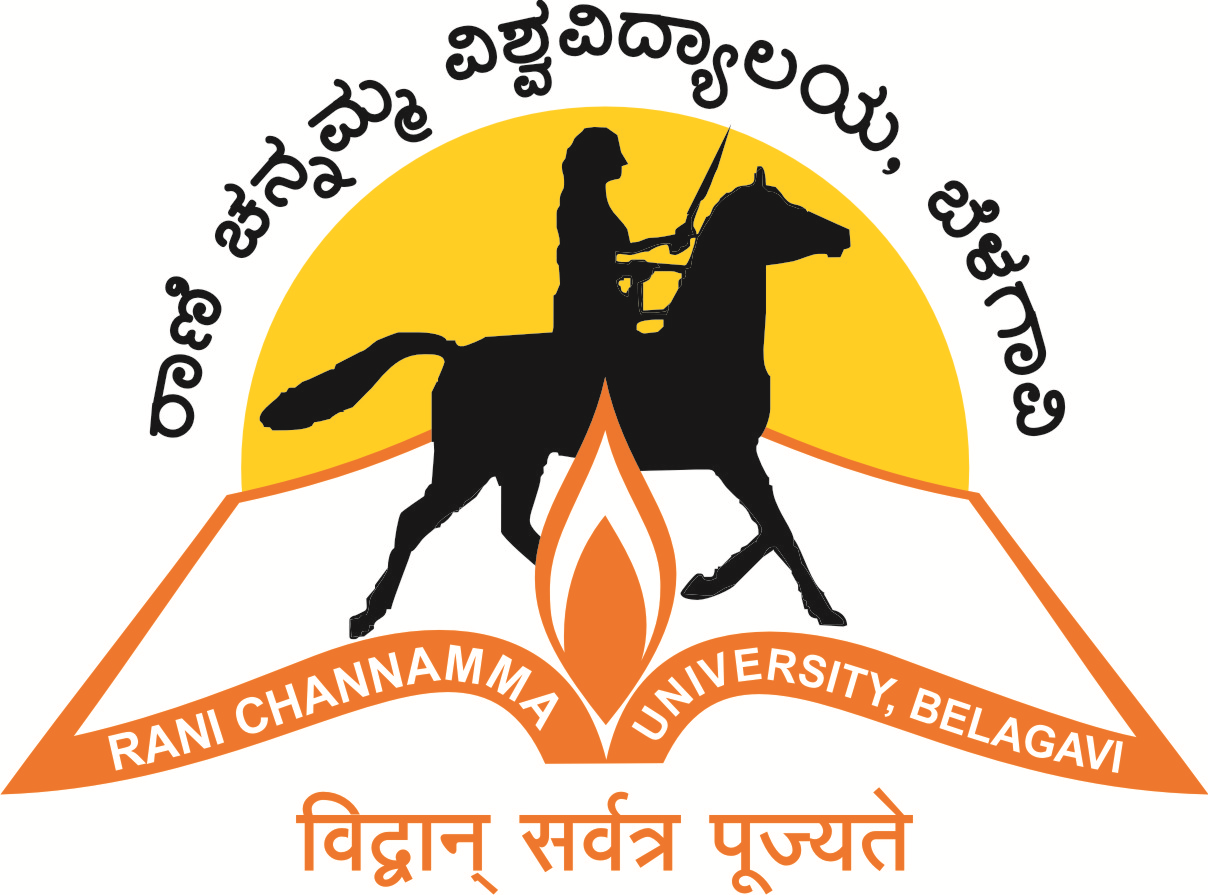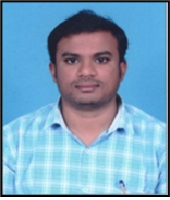
RANI CHANNAMMA UNIVERSITY, BELAGAVI
SANGOLLI RAYANNA FIRST GRADE CONSTITUENT COLLEGE
ANJANEYA NAGAR, MAL-MARUTI EXTENSION, BELAGAVI - 590 017
"A" Grade Accredited by NAAC

ABOUT:
The Department of Chemistry was established in
2010 which affiliated to Karnataka University Dharwad and later affiliated to
Rani Channamma University, Belagavi from 2008. Since then, we are running the Bachelor
of Science (B.Sc.) course. The chemistry department has an amusin
custom of conveying high-quality teaching in cutting-edge thrust areas of
chemical science, providing intensive and remedial teaching to students. In addition, the department has the facility of modern
laboratories for conducting experiments separately for organic, inorganic and
physical chemistry. The
department of chemistry actively involved in organizing guest lectures, special
lectures, seminars, workshops, orientation, symposia and industrial trips for
benefit of students at large. During the last 5 years a large number of
undergraduate students have continued their postgraduate and research programs
in chemical sciences. The Department has highly qualified, enthusiastic and
passionate faculties having research experience in Biodiesels, photo catalysis
and degradation, solid oxide fuel cells and material sciences.
Programmes:
|
Course Name |
Bachelor of Chemistry |
|
Intake |
60 |
|
Eligibility |
PUC II / 12th Science |
|
Criteria for Admission |
As per University guidelines |
|
Course Duration |
3 Year |
|
Mode of Study |
Regular |
|
Higher Studies after BSc Chemistry |
MSc in Organic Chemistry, Inorganic Chemistry, Physical Chemistry, Industrial Chemistry and Analytical Chemistry |
|
Career / Future Scope |
There is a tremendous scope of B.Sc.,
Chemistry across the public and private sectors. B.Sc., Chemistry graduates
can opt for government jobs in research laboratories and administration or
can explore varied career breaks in the technological, pharmaceutical, Argo
industries, environmental, quality assurance, analytical science information
and computational science and medical sector. |
Full Time Guest Lecturer
Dr. Nikhil S Kadam obtained his M.Sc degree in Organic Chemistry from Karnatak University Dharwad in 2014 and Ph.D in Organic Chemistry from Karnatak University Dharwad in 2021. He has cleared CSIR-NET in 2016 and KSET in 2021. He has published 7 international and 3 national papers in reputed peer reviewed journals. His area of research is Biofuels. He won the best paper award presentation in an international conference held at New Delhi in 2016. He has more than 3 years of teaching experience. Currently working as Lecturer and HOD in Chemistry at Sangolli Rayanna First Grade Constituent College Belagavi..More...
Full Time Guest Lecturer
Dr Mrunal V. Kangralkar completed her UG and PG in chemistry in Shivaji Universty, Kolhapur, Ph.D in Rani Channamma University, Belagavi. The title of research work was Evaluation Of Metal Oxide Based Nanomaterials For Removal of Dyes and Heavy Metals From Aqueous Medium. She published 4 articles in peer reviewed journal. She got best poster presentation award in international conferences. She has 11 years teaching experience in PUC, UG and PG College. .More...
Full Time Guest Lecturer
Dr. Naeemakhtar Momin obtained M.Sc. (2006) form Karnatak University Dharwad and Ph.D. (2022) in Chemistry from Rani Channamma university, Belagavi. He worked in surface engineering division at CSIR-National Aerospace Laboratories Bengaluru, Karnataka for his Ph.D. degree. Before joining to SRFGCC, Belagavi in 2022, he served as in dept. of chemistry, RCU, Belagavi as research assistant under VGST-CESEM research project. He has taught aspects of Inorganic & Physical Chemistry toM.Sc., students. His research is of multidisciplinary in nature comprising solid state, chemical, physical and engineering aspects of inorganic materials. He had worked on investigation of materials related to solid oxide fuel cells (electrolyte), photo-catalysis and degradation etc. Presently, working on nanomaterials for their applications in energy devices, environmental remediation and biomedical applications. He has published over 10 Int. Journal papers and 01 book chapter. He has guided +20 M.Sc., students for their project. He has more than 8 years of teaching experience. Currently working as faculty at Sangolli Rayanna First Grade Constituent College Belagavi. .More...
RESEARCH PROJECTS:
DEPARTMENTMENTAL ACTIVITIES:
Joint Research Activities:
PROGRAMME/ SPECIFIC/ COURSE OUTCOME:
PROGRAMME
OUTCOMES (POs)-NEP
The
B.Sc (Hons) programme in
Chemistry is designed to develop in students in depth knowledge of the core
concepts and principles that are central to the understanding of this core
science discipline. Undergraduates pursuing this programme of study go through
laboratory work that specifically develop their quantitative and qualitative
skills, provides opportunities for critical thinking and team work, and exposes
them to techniques useful for applied areas of scientific study.
ØKnowledge: Width and depth:
Students acquire
theoretical knowledge and understanding of the fundamental concepts, principles
and processes in main branches of chemistry, namely, organic, inorganic, physical,
spectroscopy, analytical and biochemistry. In depth understanding is the
outcome of transactional effectiveness and treatment of specialized course
contents. Width results from the choice of electives that students are offered.
Ø&nb
sp; Laboratory Skills: Quantitative, analytical and
instrument based:
A much-valued learning outcome of this
programme is the laboratory skills that students develop during the course.
Quantitative techniques gained through hands on methods opens choice of joining
the industrial laboratory work force early on. The programme also provides
ample training in handling basic chemical laboratory instruments and their use
in analytical and biochemical determinations. Undergraduates on completion of
this programme can cross branches to join analytical, pharmaceutical, material
testing and biochemical labs besides standard chemical laboratories.
Ø&nb
sp; Communication:
Communication is a highly desirable
attribute to possess. Opportunities to enhance studentsÂ’ ability to writ
methodical, logical and precise reports are inherent to the structure of the
programme. Techniques that effectively communicate scientific chemical content
to large audiences are acquired through oral and poster presentations and
regular laboratory report writing.
Ø&nb
sp; Capacity Enhancement:
Modern day scientific environment requires
students to possess ability to think independently as well as be able to work
productively in groups. This requires some degree of balancing. The chemistry honours programme course is designed to take care of this
important aspect of student development through effective teaching learning
process.
Ø&nb
sp; Portable Skills:
Besides communication skills, the
programme develops a range of portable or transferable skills in students that
they can carry with them to their new work environment after completion of
chemistry honours programme. These are problem
solving, numeracy and mathematical skills- error analysis, units and
conversions, information retrieval skills, IT skills and organizational skills.
These are valued across work environments.
PROGRAMME
SPECIFIC OUTCOMES (PSOs),
COURSE
OUTCOMES (COs): Theory
After successful
completion of three-year degree program in Chemistry a student should be able
to;
1.
Describe the dual nature of radiation and
matter; dual behavior of matter
and radiation, de BroglieÂ’s equations, Heisenberg
Uncertainty
principle and their related problems.
2. Electronic configurations
of the atoms.
3. Define
periodicity, explain the cause of periodicity in properties, and classify the
elements into four categories according to their electronic configuration.
4. Define
atomic radii, ionization energy, electron affinity and electronegativity,
discuss the factors affecting atomic radii, describe the relationship of atomic
radii with ionization energy and electron affinity, describe the periodicity in
atomic radii, ionization energy, electron affinity and electronegativity.
5. Explain bond properties, electron displacement
effects (inductive effect, electrometric effect, resonance
effect and Hyper conjugation effect).
Steric effect and their applications in explaining acidic strength of
carboxylic acids, basicity of amines.
6. Understand basic concept of organic reaction
mechanism, types of organic reactions, structure, stability and reactivity of
reactive intermediates.
7. Describe important characteristics of
configurationally and conformational isomers. Practice and write conformational
isomers of ethane, butane and cyclohexane.
8. Understand the various concepts of geometrical
isomerism and optical isomerism. Describe CIP rules to assign E, Z notations
and R& S notations. Explain D and L configuration and threo and erythro
nomenclature.
9. Explain
racemic mixture and racemisation, resolution of
racemic mixture through mechanical separation, formation of diastereomers, and
biochemical methods, biological significance of chirality.
10. Explain the existence of different states of matter in terms of
balance between intermolecular forces and thermal energy
of the particles. Explain the laws governing behavior
of ideal gases and real gases. Understand cooling effect of gas on adiabatic
expansion.
11. Describe the conditions required for liquefaction of gases. Realise that there is continuity in gaseous and liquid
state.
12. Explain properties of liquids in terms of intermolecular attractions.
13. Understand
principles of titrimetric analysis.
14. Understand
principles of different typeÂ’s titrations. Titration curves for all types o
acids – base titrations.
16. Understand titration curves,
indicators for precipitation titrations involving silver nitrate-VolhardÂ’s
and
MohrÂ’s methods and their differences.
COURSE OUTCOMES (COs): PracticalÂ’s
CHEMISTRY LAB
(Inorganic and Organic Analyses)
After
studying this course and performing the experiments set in it
student will be able to:
1.
Understand
and practice the calibration of glasswares (burette,
pipette, volumetric flask).
2.
Basic
concepts involved in titrimetric analysis, primary standard substances,
preparation of standard solutions.
3.
Explain
the principles of acid-base, redox and iodometric titrations.
4.
Work
out the stoichiometric relations based on the reactions involved in the
titrimetric analysis.
5.
Based
on principles of titrimetric analysis student can perform
6.
Describe
the significance of organic quantitative analysis.
7.
Determine
the amount of phenol, aniline, amide, ester and formaldehyde in a given
solution by performing blank titration and main titrations.
8.
Determine
aspirin in the tablet by hydrolysis method.
Will Be Uploading Soon!!!
Office Contact: |
Chairman/HoD Contact: |
|---|---|
Office Phone:E-mail_id: physicsdept@rcub.ac.inAddress: Department of Physics,
|
NameMobile Number:E-mail_id: |



